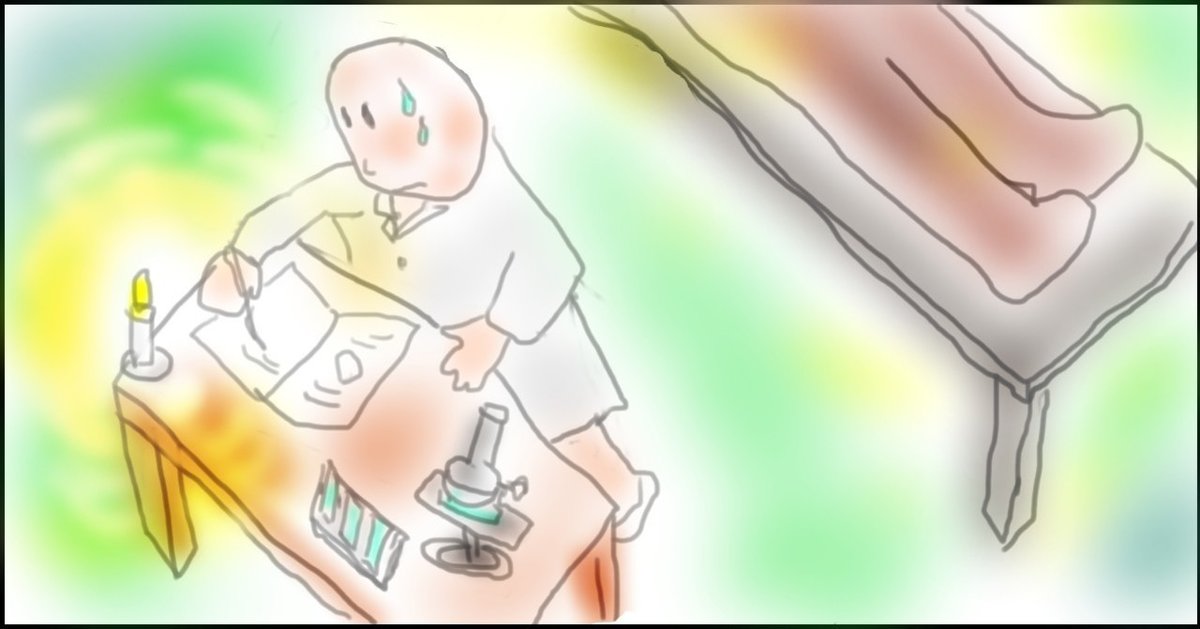
Autopsy For Peace, Hiroshima. A Man with Rib Fracture "75years A_Bomb" Dr.Soko Discussion until August 6, Day 39/50
Bleeding Tendency by Acute Radiation Poisoning
42y.o Male Soar throat, Rib Bone Fracture and Face injury, No burn
At the moment the atomic bomb exploded, he was at the window in the wooden building of the prefectural office, 850m from the hypocenter. The building was collapsed and he was stuck under rubble.
Although temporarily unconscious of 5-6 minutes, he crawled out of the collapsed building and fled. The clothes were white linen trousers and a shirt with a collar and front opening. On the way, he took a break for 5-6 hours at Sumiyoshi Shrine, 1300m from the hypocenter, and stayed near the Hiroshima Red Cross Hospital 1500m from the hypocenter until sunset.
DAY 17: The number of white blood cells was 650, which was remarkably low. So, he was admitted Saijo Clinic.
DAY 18:He had bleeding in his gums and white blood cell count was 1300.
DAY 19: As results of urine test, urine protein was positive. Urobilin, urobilinogen, and creatine were positive. (In other words, renal disfunction was observed. In addition, urobilin and urobilinogen were detected, which indicate liver dysfunction or blood hemolysis.)
DAY 20: White blood cell count was very low at 850.
DAY 21: white blood cell count was extremely low at 370.
DAY 22: the number of white blood cells was 500. He had a sore throat, and redness of the pharynx was observed. The stool was normal and his physical condition was not bad.
DAY 23, white blood cell count was 260. There was a red swelling of the size of the palm in the left groin. There were several ulcers on the right hip.
DAY 24: The number of white blood cells was 350, the number of red blood cells was 2 million. Marked leukopenia continued, and anemia was also remarkable. He had been very sick. He had jaundice and subcutaneous hemorrhagic spots. Urticaria was seen on his left foot.
DAY 25: he got unconscious and died at 17:00.
As a treatment at that time, 100 ml of blood was transfused every day, and vitamin C, adrenaline, 'thrombogen', and glucose solution were injected.
Pathological Findings
Pseudomembranous ulcer stomatitis, ulcerative tonsillitis, pseudomembranous esophagitis
Significant bleeding findings (pleural covering the lungs, right kidney, lower esophagus, gastric mucosa, petechiae of the skin and extensive subcutaneous bleeding)
Head hair loss
Lack of blood clot (usually blood forms clots but there were no clots, which means there was a coagulation problem)
Remarkable glottic edema
Remarkable pulmonary edema
Mild swelling of the spleen, mild swelling of the lymph nodes
The liver had mild jaundice, but the surface was smooth and normal, mild jaundice on the whole skin
Right fifth rib fracture
Dark red spots are widespread across the back
Explanation:
A 42-year-old man suffered a rib fracture and cuts because he got to be under the collapsed house, but he crawled out of the building and ran away. However, he stayed for at least 10 hours within 1.5 km from the hypocenter, even if the location had been changed from the Sumiyoshi Shrine to the Japan Red Cross Hiroshima Hospital.
Perhaps, he could not had moved due to his injury and sickness.
His symptoms right after he had radiation-poisoning by the bomb, were written few.
But since Day18, there were obvious symptoms of bleeding tendency by the acute radiation poisoning, such as bleeding from gums. Also, yellowish skin which was jaundice was seen. It is inferred that the cause of jaundice was hepatitis or biliary obstruction, however the autopsy result showed not liver disease and no obstruction of biliary tract. So hemolytic anemia which raises indirect bilirubin, can be another possibility of its cause. That showed the strong effect of acute radiation damage to the bone marrow and the whole body.
In addition, his blood did not make clots in autopsy findings. That was due to the decrease of platelets or a problem of coagulation. It cannot be denied with the relation to the effect of radiation.
The hair loss was often observed about 2 weeks after the radiation exposure.
*The man, who had a bone fracture and early symptoms of radiation damage, spent the day of August 6 near the hypocenter.
If he was able to go far from the hypocenter, his condition may had gotten better than the fact.
It teaches us that it is important to move away faster than anything else if radiation damage is suspicious.
